The content of the article
Canned fish is considered to be a universal dish. Experienced housewives prefer to cook the product for the future, so that they can enjoy it at any time of the year. Shop canned food is stuffed with preservatives, thickeners, flavor enhancers and additives, this is detrimental to health. Homemade blanks are distinguished by their natural composition, therefore they are better and more useful. We give practical recommendations, highlight the main aspects.
Cooking features
- For the preparation of canned food, you can use any fish, both marine and river. However, experienced mistresses, through trial and error, identified certain varieties that are optimal for harvesting. Give preference to carp, pike, tench, bream, roach, crucian carp and other species that live in large bodies of water. As for sea fish, most often canned mackerel, capelin, sprat.
- Fish suitable for home cooking should not be damaged. Carefully inspect the carcass before using it for preservation, use only fresh produce. In most cases, corn, olive or vegetable oil is added to the product. This ingredient improves palatability and increases shelf life. You can often find recipes based on tomato sauce with seasonings and aromatic spices.
- Canned fish is rolled up in small cans. The optimal volume is considered to be from 0.3 to 1 liter. Before you lay out the finished product in containers, they must be sterilized. For these purposes, a water bath is used. To carry out the procedure, take a wide pan, place a cloth or board on the bottom, put a jar. Pour in water, boil over medium heat for a quarter of an hour. Do the same with covers.
Sprats in wine
- fish (small) - 0.8 kg.
- vegetable oil - 100 ml.
- dry white wine - 145 ml.
- onion - 3 pcs.
- pepper (pea) - 5 pcs.
- laurel leaf - 6 pcs.
- vinegar solution (table) - 45 ml.
- seasonings (optional) - to taste
- salt - 55 gr.
- For the preparation of canned food, small fish (sea or river) are suitable. Give preference to gudgeon, roach, perch, ruff, dace, etc.
- After selecting the raw material, clean the carcass from the scales, remove the intestines and clean the cavity from the dark film. Wash the fish thoroughly under running water, dry so that it does not soften.
- Choose the optimal pan with thick walls and a bottom, cut the onion rings, put one part in a container with a thin layer. Now put small fish in one row, salt on top. Make a layer of onions again, alternate the ingredients until the pan is 2/3 full.
- After that pour pepper into peas, add bay leaf, pour in oil. Mix table vinegar (concentration 9%) with white wine, fill them with fish. If desired, you can replace the wine with drinking water, observing the proportions.
- Cover the pan with a lid, put on a stove, simmer at minimum power for about 4-4.5 hours. Owners of pressure cookers will have much easier, the duration of languishing is reduced to 1.5 hours.
- The readiness of the product will tell you the structure of the fish. The carcass has such soft bones that they literally melt in your mouth, you will not notice them. Once this consistency is achieved, roll the product in sterile jars, send for long-term storage in the cellar.
Sprat with vegetables in tomato
- sprat - 2.8-3 kg.
- carrots - 0.7 kg.
- fresh tomatoes - 2.8 kg.
- onions - 0.8 kg.
- coarse salt (preferably sea) - 200 gr.
- vinegar - 90 ml.
- beet sugar - 250 gr.
- bay leaf - 10 pcs.
- pepper (peas) - 14 pcs.
- Clean the capelin, roach or sprat from the insides, cut off the heads, tails and fins. Wash and dry the carcasses. Rinse the tomatoes with water, remove the stalks, pass the vegetables through a harvester, blender or meat grinder, pour the tomato juice into an enameled pan. Turn on the burner to a minimum, cook chopped tomatoes for about half an hour (before boiling). After that add sugar, salt, mix until crystals are dissolved.
- Peel the carrots, grate on a coarse grater. Cut the onions in half rings, fry the vegetables until golden brown in sunflower oil. Send the frying to the tomatoes, mix, simmer under the lid for another 10 minutes, turn off the stove.
- Take a thick-walled pan. At the bottom, lay a layer of cooked tomatoes with frying, then add the fish, placing it in a row. Fill the pan by 2/3, without fail the last layer should be vegetable. Add peas, laurel and other seasonings as desired.
- Cork tightly with a lid, simmer for 3 hours, do not mix. A quarter of an hour before the completion of the procedure, take a Chinese stick, make holes in canned food. Pour vinegar over the mixture so that it drains into the holes and soaks the composition.
- Sterilize containers and lids in a water bath, dry them so that moisture does not get into canned food. Pack the finished product, roll up, cool at room temperature. Take it to the basement or cellar for storage.
Silver carp in oil
- silver carp - 1 kg.
- olive or vegetable oil — 300 ml.
- ground black pepper - 20 gr.
- sea salt - 60 gr.
- First of all, you need to cut the fish. Cut off the head, tail, fins. Get the insides, scrape off the dark film in the cavity. Wash the carcass, dry it with paper towels.
- Cut the fish into thin slices, if desired, you can remove the ridge. Fillet lovers are advised to skin, then chop the carcass into small segments.
- Prepare jars, sterilize them in a convenient way. You can put the containers in the oven and warm them well. Some perform the procedure through a water bath (boiling for about 20 minutes).
- After sterilization, dry the container, begin to lay out the fish slices in layers, blocking each row with salt and ground pepper. Fill the container so that the fish reaches almost the neck (1-2 cm indent). After all the manipulations, fill the product with oil.
- Now pick up a wide pan with a thick bottom, place a thick cloth or board. Put cans in it so that they do not touch each other. Pour water, the liquid should reach the middle of the cans.
- Boil the product for about 20 minutes until the bones (if any) are completely softened. Before turning off the burner, take 1 slice and taste it. If everything is fine, roll up the jars and cool naturally.
Sprats in a multicooker
- fish (any) - 1 pc. big size
- carrots - 1 pc.
- tomato paste - 60 gr.
- onions - 2 pcs.
- vinegar - 25 ml.
- salt - 70 gr.
- seasonings - at the discretion
- Gut the carcass, remove the head, fins, tail, remove the scales. Remove the bubble located in the cavity of the fish. Follow the steps carefully, otherwise it will tear and give sprats bitterness.
- After all the manipulations, wash the carcass, dry it with paper towels, cut into slices. Then mix seasonings with salt, rub the fish on all sides.
- Take out the crock-pot bowl, place the raw materials in it, start preparing the sauce. Dilute the tomato paste with water 1: 1, mix. Pour in the vinegar, fill the resulting sauce with fish.
- Peel and grate the carrots on a coarse grater, chop the onion rings, place the cooked chopped vegetables on top of the fish in the sauce. Place the multi-bowl in the appliance, close the lid, set the “Extinguishing” mode.
- To check the readiness of the sprat, take out a small piece, evaluate it for taste. The bones should become soft, barely noticeable. After the quenching is complete, roll the fish in sterilized jars, send for storage or immediately start consuming.
Sprats in tomato
- fish (any) - 1.3 kg.
- tomatoes - 2.1 kg.
- salt - 30 gr.
- vegetable oil - 150 ml.
- onions - 320 gr.
- pepper (peas) - 6 pcs.
- bay leaf - 7 pcs.
- granulated sugar - 150 gr.
- salt - 35 gr.
- vinegar - 100 ml.
- vegetable oil - 40 ml.
- wheat flour - 30 gr.
- Gut the fish, prepare the carcass for conservation. Wash it, cut it into small pieces. Rub the slices with salt, leave for 1 hour. At this time, start cooking tomato sauce.
- Wash the tomatoes, exclude the stalks, place in a wide enameled pan. Pour a little water, add seasonings, vegetable oil, granulated sugar and vinegar. Cook vegetables for about half an hour, then turn off the hotplate.
- Wipe the tomatoes through a sieve or grind in a blender / meat grinder. Add table vinegar, then put on the stove again, simmer over medium heat for 30 minutes. At this time, fry the fish slices in a pan, after dipping them in flour.
- Sterilize jars, dry them, otherwise even a drop of water can ruin the entire product. Place the fish in the containers, pour the resulting tomato juice. Put in a wide pot and boil in a water bath for about 1 hour.
- After the due period, roll up the container, put it to sterilize, the duration of the procedure is 4 hours. In order not to break the covers, fix the special holder. Next, take out the twist, turn the neck down, cover with a warm cloth. Allow to cool under natural conditions, send for storage.
Fish preservation in the oven
Sprats can be cooked not only in a slow cooker or on a stove, but also in the oven. Remember some important rules to preserve correctly.
- Choose jars of the same size so that the composition is saturated evenly. In this case, an indicator of 0.3-1 liters is considered the optimal volume.
- Before laying raw materials, sterilize and dry the container, otherwise the jars may explode during storage. Lay out the fish so that there are no gaps.
- In order for the fish to be steamed well, wrap the neck with food foil. Make sure that no air enters the cavity, otherwise the product will dry.
- Place a baking tray with water on the bottom shelf to moisturize. In this case, containers with the composition are placed in the middle of the oven.
- After you send the jars with the contents inward, wait until it boils, then reduce the power to 100 degrees. Preserve sprats in this mode for 5 hours, then fill with hot vegetable oil and cork.
It is easy to prepare sprats, if you have information regarding the available technologies. Choose fish to your taste and wallet, consider recipes based on tomato juice, vegetable oil, add spices and seasonings if desired. Fish preservation is an easy process, most importantly, observe important features, observe proportions and duration of exposure.
Video: canned fish at home


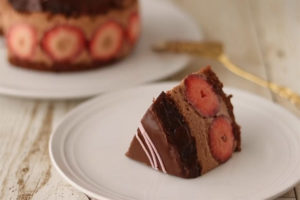
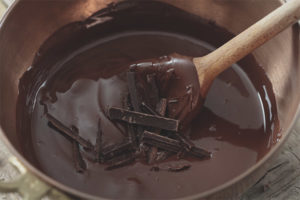
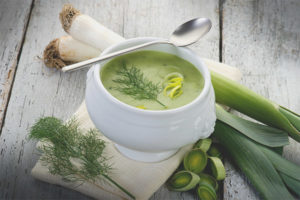

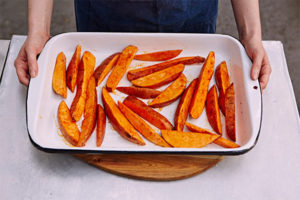
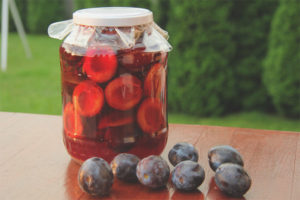
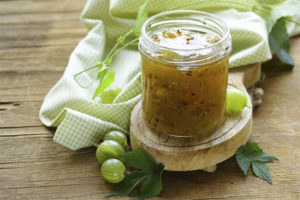
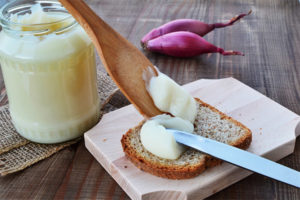
Submit
Discussion start! Stew vegetables for less time! Delicious! But little use
all vitamins are boiled! Therefore, do not get carried away! Good appetite!!!